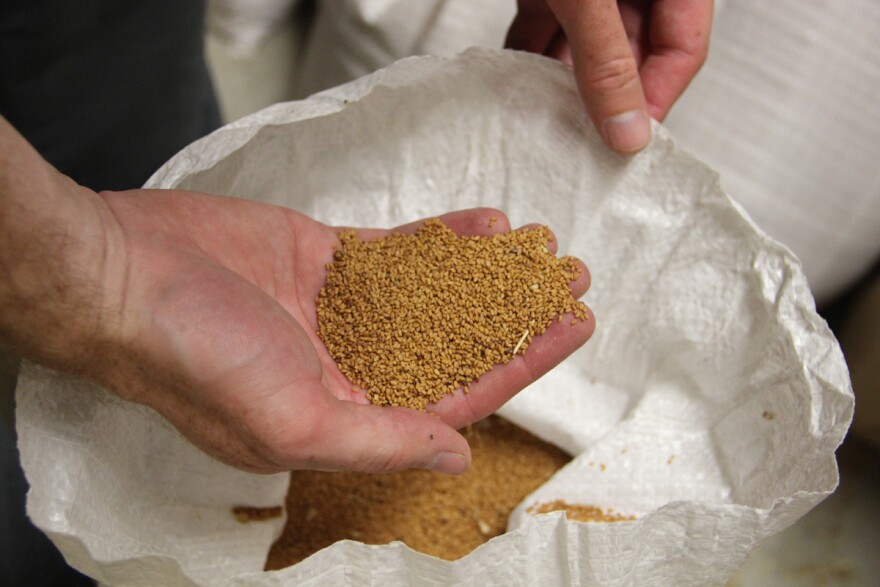On a windy August day outside of Fort Collins, three Colorado State University students crouch in a field, harvesting a crop by hand. The plants in the field, which are browning slower than usual during a wet, cool summer, are a light tan color and about knee high.
The crop is called camelina, and the researchers believe these plants, which produce tiny, oil-filled seeds, could provide farmers with the ability to grow their own fuel on the farm.
Brian Campbell is one of the students harvesting the camelina with a sickle-shaped knife. The master’s student planted 192 types of camelina in little side-by-side plots, as part of an effort to learn which ones are the most heat tolerant and get good yields.

Campbell and other researchers believe camelina could be a good crop for farmers in arid regions, like Colorado. That’s because it can fit into a three-year winter wheat rotation, growing and maturing in just a couple of months during a farmer’s fallow season. If a farmer can fit it in and use the crop to produce farm-grown fuel, that could save a lot of money.
“On a decent sized farm, farmers can spend $100,000 a year on fuel,” said Campbell.
One of the beauties of camelina, said Campbell, is that if you press the oil out it and mix it as a ratio of 3 parts camelina oil to one part unleaded gasoline, you get a fuel that can run in a diesel engine, with no other modifications.
“So not only can a farmer grow his own fuel on farm, it’s actually a pretty big supplement,” said Campbell.
That’s not happening yet, although CSU is working with some area farmers to grow research crops of camelina. The crop is also appealing, said Campbell, because other than an oil press, farmers wouldn’t need a lot of equipment to transform it from seed to fuel.
John McKay, a CSU scientist, has received a $1.5 million grant from the Department of Energy to do genetic research on camelina.
"The plan is to adapt camelina for production under limited irrigation," said McKay. He also hopes to develop a variety whose oil can go straight into a diesel tank -- no gasoline necessary.
"So you can just squeeze it out and put it in an engine," said McKay.
The Department of Energy is interested in biofuel crops that are better than corn ethanol. Switchgrass is one, but it needs too much water to be grown as a fuel crop in Colorado. Camelina, on the other hand, might be able to fit in with what local farmers are already growing.
McKay's grant will last three years. During that time he'll be growing camelina in fields and greenhouses, doing experiments to learn more about how the plants' genes are linked to specific physical characteristics.






